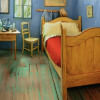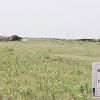Tagore's legacy in Bangladesh
Rabindranath Tagore's 'Shilaidah Kuthibari' (mansion) and ‘Shahzadpur Kachharibari’ inspired some of his most celebrated literary works ranging from poetry to spiritual songs, which includes the translation of Gitanjali around 1912.
During his visit to Kuthibari, he passed most of his time on his much loved Bojra (boat) called Padma. There he wrote some of his masterpieces.
Ahmed Rafiq, the veteran literary activist and well known Tagore researcher, says Shilaidah is one of the places where the poet turned into a spiritual being.
"Here he met baul Gogon Harkara. His song inspired Tagore in a way that he started searching for the baul spirituality and found Lalon. Many of his writings including his famous novel Gora has songs written by Lalon," he points out.
Tagore first came to Shilaidah along with his elder brother Jyotirindranath in 1876, when he was 15. Though the brothers went to settle matters related to their zamindari (family estate), the mighty river Padma and natural beauty of Shilaidah made a deep impact on the young poet’s mind.

In the priceless collection are an iron cabinet, iron water filter, a lawn mower, table used for revenue collection of the family estate, Tagore's bed, chair, sofa, file cabinet, dining table, reading table, book shelf, two big almirah, an easy chair, and a speed boat in the Kuthibari museum.
Valuable and historical pictures are also kept in the museum. Of the rare photographs, one of poet and scientist Satyen Sen, Rabindranath along with Sharat Chandra and many other elites of nineteen century hang in the museum.
Of his famous books, “Shonar Tari”, “Chitra”, “Chokher Bali”, “Pujarini”, “Obhisar”, “Bisharjan” and short stories like “Uddhar”, “Durbudhhi”, “Shubho-Drishti” and “Sadar-Andar” were written in Shilaidah and Shahzadpur.

 For all latest news, follow The Daily Star's Google News channel.
For all latest news, follow The Daily Star's Google News channel. 








Comments